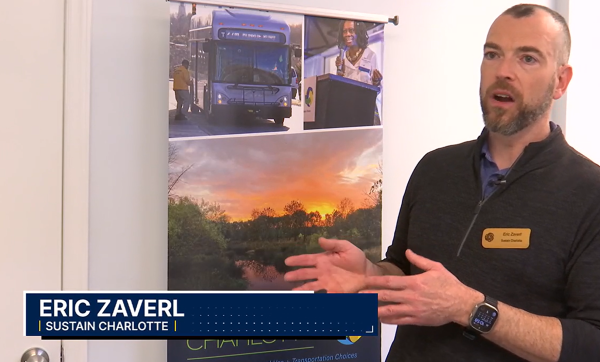Does Charlotte need more roads or more rail? (WSOC-TV)

Eric Zaverl/WSOC-TV
This week, WSOC-TV investigated whether Charlotte would be better served by building out our bus or rail systems.
Investing in bus network improvements has two major advantages over rail projects, according to Charlotte City Councilmember Ed Driggs, head of the Transportation, Planning, and Development Committee. He says they take less time, and they cost a lot less to implement.
“We might be able to complete some road projects early on and then not abandon rail entirely,” he said. Driggs also sees Bus Rapid Transit as a potential alternative to large-scale rail projects.
In concept, BRT essentially mimics rail, on the roads. Buses travel in their own dedicated lanes and rights of way, stops have their own stations and the routes are predictable and easy to follow, like a light rail.
“Some of the newer vehicles look just like a train,” Eric Zaverl from Sustain Charlotte said. “BRT could also work that way if it’s built correctly. You could build, you a light BRT, and you’re really not solving the problem.” Zaverl said that means committing to building the stops, acquiring buses and drivers to provide frequent service, and preventing any single-occupancy vehicles from getting in the bus’s lane.
All of that requires investing in and building new infrastructure, though far less upfront capital than building an entire rail line.
Some argue that light rail moves more people, more quickly and attracts density. The trains are usually longer, their infrastructure requires a right of way and stations so they can’t be undermined the way Zaverl warned BRT could be. Rail lines are also likely to spur community involvement.
Better buses/BRT and rail are not necessarily mutually exclusive and transit leaders and advocates acknowledge different modes could work better in different parts of the metro. Bus investment is necessary even if all the city’s rail projects get the funding they need because rail will never be able to move passengers everywhere within the city.
